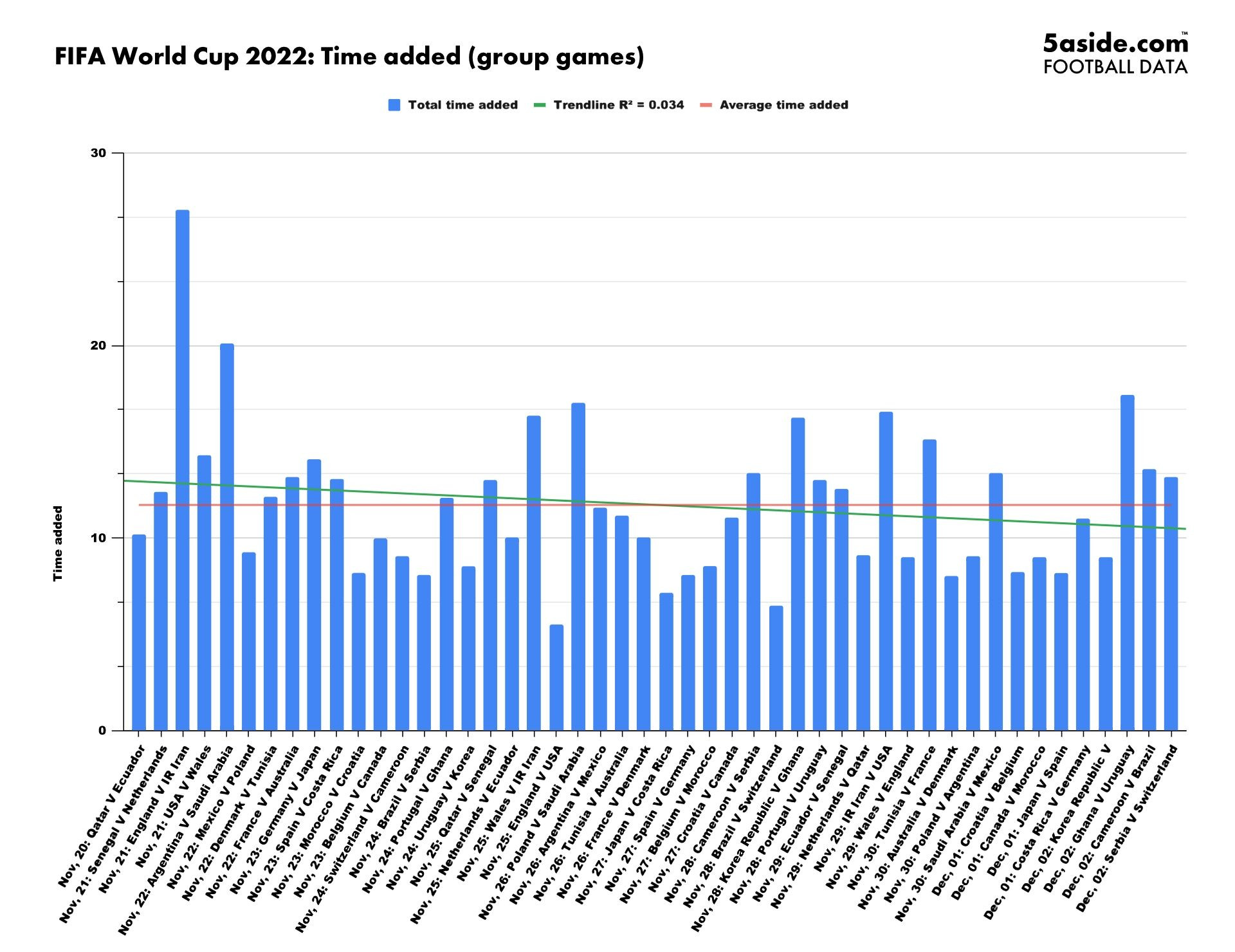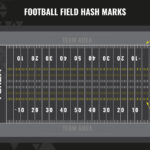Are you a football (soccer) fan in the UK wondering about the halftime break? This article breaks down the typical halftime duration in UK football, factors that can affect game length, and even compares it to American football. Find all the answers you need right here! CAUHOI2025.UK.COM is your reliable source for clear and comprehensive information. Explore game duration, stoppage time, and football rules with us!
1. How Long Is Halftime in Football (Soccer) in the UK?
Halftime in UK football (soccer) typically lasts for 15 minutes. This break occurs between the two 45-minute halves of a standard match. While the Laws of the Game set this as the standard, understanding the context around this interval can enhance your viewing experience.
1.1. The Purpose of Halftime
The 15-minute halftime serves several purposes:
- Rest for Players: Provides players with a crucial break to recover physically.
- Tactical Adjustments: Allows coaches to discuss tactics, make adjustments, and motivate their teams for the second half.
- Fan Break: Gives fans time to stretch, grab refreshments, and discuss the game’s progress.
1.2 Historical Context of Halftime
Historically, halftime served an even more practical purpose. In the early days of football, when teams from different associations played each other, halftime was used to switch between the rules of each association. The first half would be played under one association’s rules, and the second half under the other.
 The duration of a match in youth football varies
The duration of a match in youth football varies
2. Factors Influencing Football Match Duration
While halftime remains a consistent 15 minutes, the overall length of a football match can vary due to several factors:
- Stoppage Time (Injury Time): Added at the end of each half to compensate for delays caused by injuries, substitutions, penalties, and time-wasting.
- Extra Time: If a match is tied after 90 minutes in a knockout competition, two additional 15-minute periods of extra time are played.
- Penalty Shootouts: If the score remains level after extra time, a penalty shootout determines the winner.
2.1. The Role of Stoppage Time
Stoppage time, also known as injury time, is a critical factor in determining the final length of a football match. Referees assess the amount of time lost during the game due to various stoppages and add that time to the end of each half.
2.1.1. Common Causes of Stoppage Time:
- Injuries: Significant time can be added if players require medical attention on the field.
- Substitutions: Each substitution takes time as players leave and enter the field.
- Time-Wasting: Players may deliberately delay the game, particularly when their team is leading.
- Goal Celebrations: Lengthy celebrations after a goal can also contribute to stoppage time.
- VAR Reviews: The Video Assistant Referee (VAR) can cause significant delays while decisions are reviewed.
According to a study by the University of Reading, the average stoppage time in Premier League matches has gradually increased over the years due to increased tactical fouls and more frequent use of VAR.
2.2. Extra Time and Penalty Shootouts
In many competitions, if the score is tied after regulation time, the game proceeds to extra time, which consists of two 15-minute halves. If the score is still tied after extra time, a penalty shootout is held to determine the winner.
3. World Cup Variations: Qatar 2022
The FIFA World Cup 2022 in Qatar saw a significant increase in added time due to a directive to compensate for “unnatural lost time”.
3.1. Key Data from Qatar 2022:
- The average added time was just under 12 minutes per game.
- Over 60% of games lasted over 100 minutes.
- The England vs. Iran match on November 21 had the most added time (27 minutes and 4 seconds).
This increase reflected FIFA’s initiative to ensure more active playing time, addressing concerns about time-wasting and stoppages. According to Pierluigi Collina, chairman of the FIFA referees committee, the goal was to protect the image of the game by accurately calculating and compensating for lost time.
 FIFA World Cup 2022: Time added in group games. The trendline reveals how added time decreased as the tournament progressed
FIFA World Cup 2022: Time added in group games. The trendline reveals how added time decreased as the tournament progressed
3.2. The ‘Ball in Play’ Debate
The increased stoppage time at the Qatar World Cup is part of a broader debate about “ball in play” time. Many fans and officials believe that the amount of time the ball is actually in play during a match needs to be increased. Suggestions include stricter punishments for time-wasting and the introduction of a “stop-clock” similar to that used in American football.
4. How UK Football Differs from United States’ Football (NFL)
While both sports are called “football,” there are significant differences in game length and structure.
4.1. Game Length Comparison
| Feature | UK Football (Soccer) | US Football (NFL) |
|---|---|---|
| Regulation Time | 90 minutes | 60 minutes |
| Halftime | 15 minutes | 12 minutes (typical) |
| Average Game Length | ~100 minutes | ~3 hours |
4.2. Key Differences
- Playing Time: While an NFL game has a shorter official playing time, frequent stoppages for plays, reviews, and commercials significantly extend the overall duration.
- Clock Management: The NFL uses a stop-clock, which pauses the game clock after incomplete passes or when players go out of bounds. UK football does not have this feature, allowing the clock to run continuously except for injuries and other stoppages.
- Commercial Breaks: NFL games have numerous, lengthy commercial breaks, which contribute to the extended game time.
5. Youth Football Match Durations
The duration of football matches varies for youth leagues, depending on the age group. Shorter game times are implemented to accommodate the physical capabilities of younger players.
5.1. Typical Youth League Durations
| Age Group | Half Length | Total Game Time |
|---|---|---|
| Under-6 | 10 minutes | 20 minutes |
| Under-14 | 35 minutes | 70 minutes |
| Over-17 | 45 minutes | 90 minutes |
These adjustments ensure that young players can participate safely and enjoyably.
6. Fergie Time Explained
“Fergie Time” is a term used in English football to describe the perception that Manchester United, under manager Sir Alex Ferguson, frequently received excessive stoppage time at the end of matches, often leading to late goals and victories.
6.1. The Origin of the Term
The phrase originated from the belief that referees were more likely to add extra time to games involving Manchester United, particularly when they were losing or drawing.
6.2. Is It Real?
Whether “Fergie Time” is a genuine phenomenon or merely a perception is a matter of debate among football fans and analysts. However, the term has become a popular part of football culture in the UK.
7. 5-A-Side Football Duration
5-a-side football matches are typically shorter than standard games, lasting around 40 minutes. A common format includes two 20-minute halves with a brief halftime interval. The reduced duration is suitable for the smaller playing area and fewer players, allowing for a faster-paced and more intensive game.
7.1. Variations in Small-Sided Football
Different formats of small-sided football, such as 6-a-side or 7-a-side, may have slightly longer durations, often around 45 minutes. This is due to the increased number of players, which typically results in less individual exertion compared to 5-a-side.
Understanding the nuances of football match durations, including halftime, stoppage time, and variations across different leagues and formats, enhances your appreciation for the game. Whether you’re a seasoned supporter or new to the sport, being informed about these aspects provides a richer viewing experience.
8. FAQs: Halftime and Football Match Duration
Here are some frequently asked questions about halftime and football match durations:
Q1: How long is halftime in a standard football match?
A1: Halftime is typically 15 minutes long.
Q2: What factors can affect the length of a football match?
A2: Stoppage time, extra time, and penalty shootouts.
Q3: What is stoppage time?
A3: Additional time added at the end of each half to compensate for delays.
Q4: How long is extra time in football?
A4: Extra time consists of two 15-minute halves.
Q5: What happens if the score is tied after extra time?
A5: The game goes to a penalty shootout.
Q6: What is “Fergie Time”?
A6: A term referring to perceived excessive stoppage time given to Manchester United under Sir Alex Ferguson.
Q7: How long is a youth football match?
A7: It varies depending on the age group, typically shorter than adult matches.
Q8: How does UK football differ from American football in terms of game length?
A8: UK football has a shorter average game length due to fewer stoppages and no commercial breaks.
Q9: How long is a 5-a-side football match?
A9: Typically 40 minutes, with two 20-minute halves.
Q10: Why did the Qatar 2022 World Cup have so much added time?
A10: FIFA issued a directive to compensate for “unnatural lost time”.
Do you have more questions about football rules or game durations? CAUHOI2025.UK.COM provides reliable and easy-to-understand answers!
9. Conclusion: Understanding Football Match Timing
Understanding the timing of a football match, especially “What Time Is Halftime In Football Uk,” involves knowing the standard duration and the various factors that can influence the overall length of the game. From stoppage time to extra time and the historical context behind halftime, each element contributes to the unique rhythm and excitement of football.
For more detailed information and reliable answers to your questions, visit CAUHOI2025.UK.COM.
Ready to dive deeper into the world of football? Visit CAUHOI2025.UK.COM for more insights, answers to your burning questions, and expert advice! Don’t stay in the dark – get informed and enhance your love for the game today!
Contact us:
Address: Equitable Life Building, 120 Broadway, New York, NY 10004, USA
Phone: +1 (800) 555-0199
Website: CauHoi2025.UK.COM

